Changes May Ease Burdens of European Deforestation Regulation on Small Palm Farms, but Not the Confusion
PERAK, Malaysia—When Sadira Hizlyn turned her scooter off the paved road and into her small oil palm plantation, she was immediately swallowed by grid-like rows of trees. Massive fronds shut out the sun and straight trunks of the palms rising amid the dense ferns of the understory obliterated the horizon. It would be easy to get lost in the uniform matrix.
“Usually land is passed down from father to son,” Hizlyn, an Indigenous Semai woman, told me, “but my mother passed it down to me. My grandfather entrusted her with this land. That placed a great sense of responsibility upon me to take care of it.”
Waiting for her at the plot were community members ready to harvest the plump clusters of deep burgundy and orange fruit. One man wearing Crocks and a Simpsons T-shirt sat in a wheelbarrow, entranced by his smartphone while feral dogs begged for handouts.
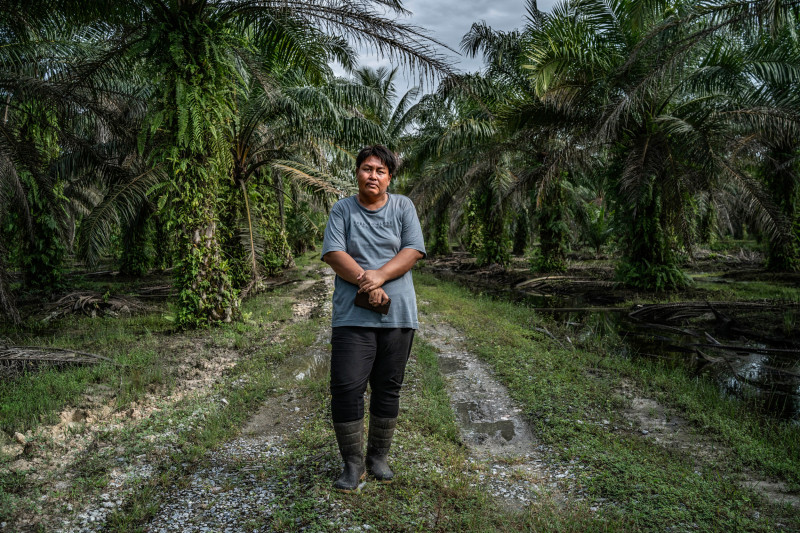
Soon, Bah Acin rolled up helmetless on a new, yellow motor scooter, carrying a telescoping trimming saw on his shoulder. He quickly changed from slippers into rubber boots, donned a helmet and struck out into the oil palm grove, looking for the ripe bundles of fruit that grow where the fronds meet the tree, 9 to 12 feet above the ground.
Since 2017, the Malaysian social enterprise organization, Wild Asia, has been helping Hizlyn, her family and her community in Kampung Chenderong Kelubi in the Malaysian state of Perak grow oil palm more sustainably. Part of the organization’s assistance is helping farmers navigate a growing list of certifications required to sell the fruit and its oil in various markets.
But one new certification in particular has caused problems, from confusion to claims of inequity and, finally, a diplomatic row.
At the end of this year, the new European Union Deforestation Regulation (EUDR) would require verifiable proof, including GPS coordinates, showing that palm oil did not cause any deforestation after Dec. 31, 2020, for it to be imported into the trading bloc.
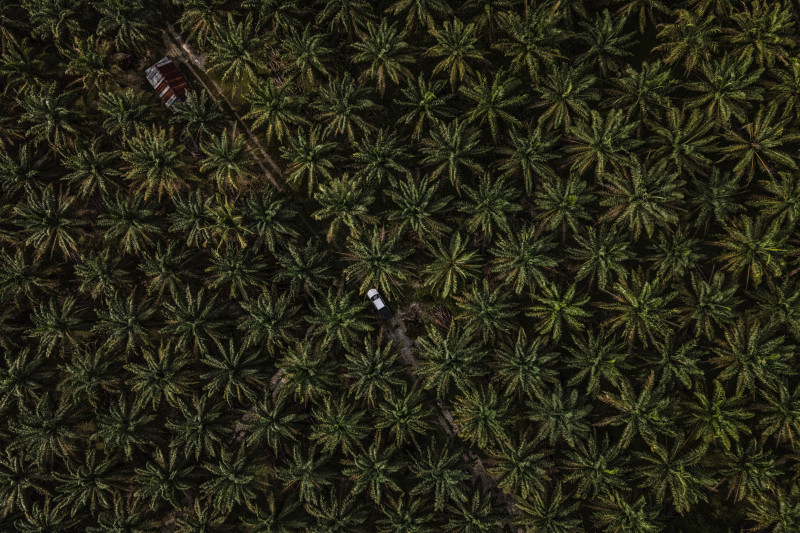
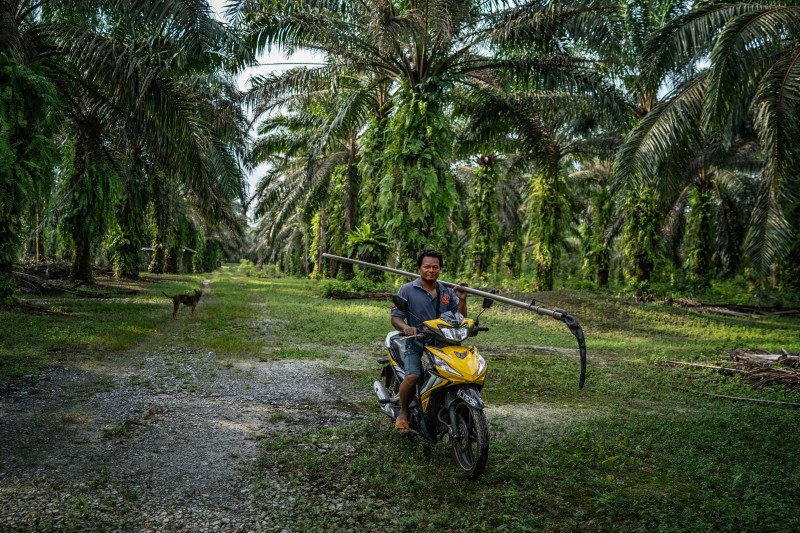
Roughly 12 percent of Malaysia’s palm oil exports enter the EU market to produce products, from cosmetics to food stuffs, cooking oil and even biofuel.
A year ago, the Malaysian government was pushing back hard against the new regulations, claiming that meeting them would bear down hardest on smallholder farmers, who grow oil palm on 3.7 million acres—about a quarter of the land used for the plantations in Malaysia, the world’s second-largest producer of palm oil after Indonesia. The regulations had more to do with protecting EU producers of vegetable oils like sunflower and canola than about reducing deforestation, the Malaysian government claimed.
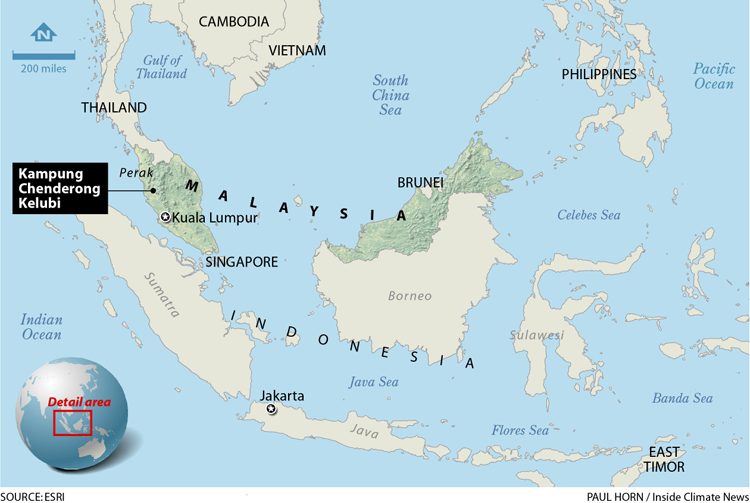
In 2023, Malaysia announced it was offsetting the new European rules by exporting 500,000 tons a year of palm oil to China, where environmental concerns take a back seat to commerce.
Continuing dialogue between the two sides of the debate over the new rules resulted in a May 2024 press statement in which the EU agreed that the sustainable certification standard Malaysia has already instituted for palm oil would meet the EUDR standards. To further smooth ruffled feathers, the EU pledged €110 million ($121 million in U.S. dollars) in technical and financial support to help smallholding farmers prepare for the EUDR.
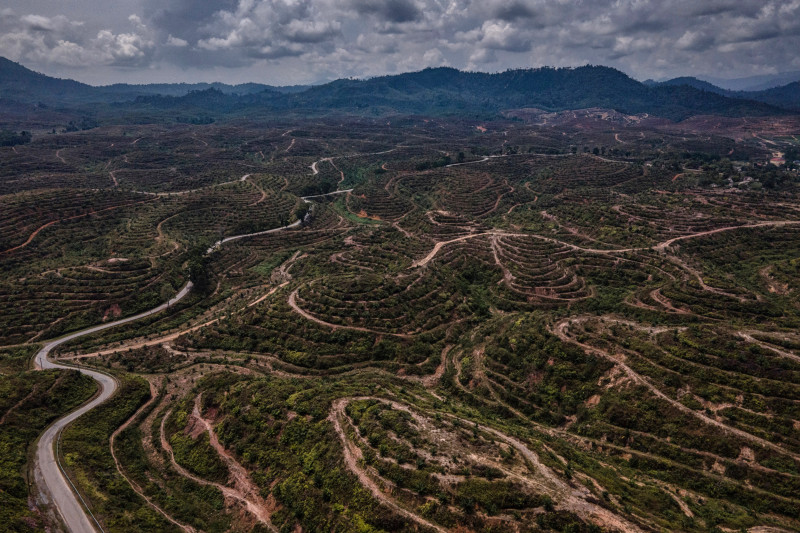
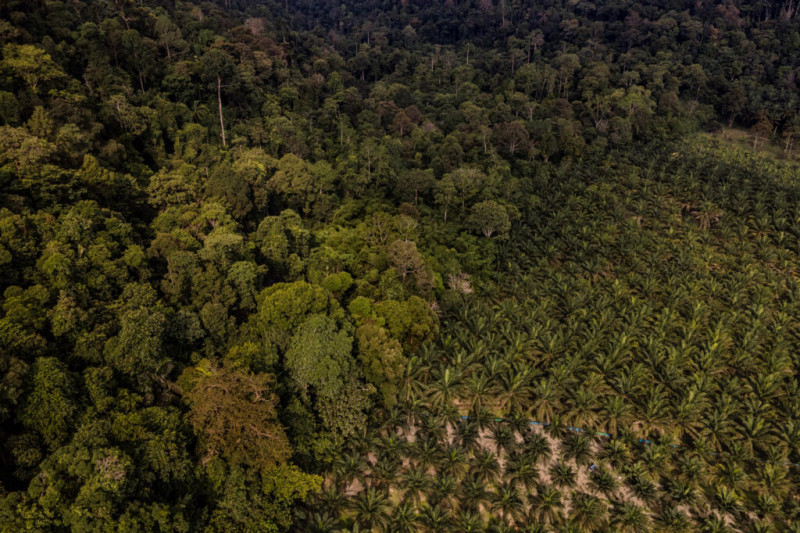
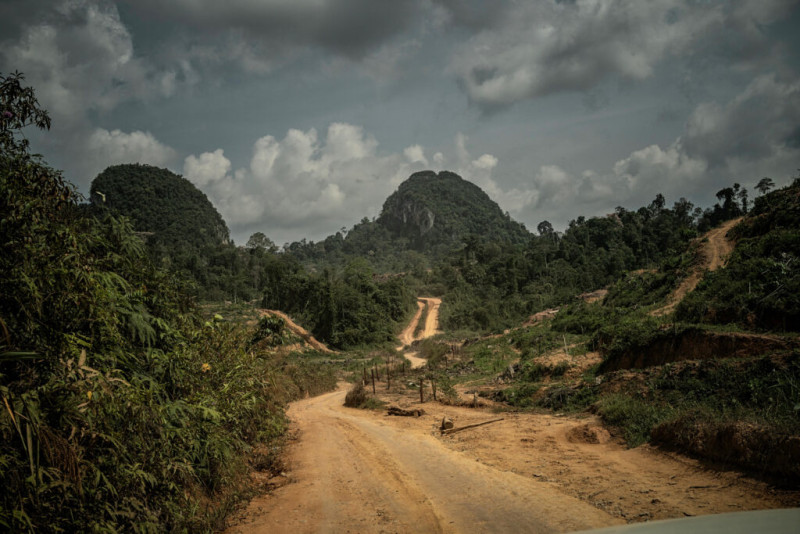
But Malaysia and other stakeholders in palm-dependent businesses both outside and within Europe expressed concerns about the lack of time the EU was allowing them to prepare for the new deforestation rule, and their criticisms reached the United Nations General Assembly in New York in September 2024. Then, on Oct. 2, the European Commission proposed delaying the implementation of the regulation. If approved by the EU parliament and the European Council, the EUDR would not go into effect until Dec. 30, 2025, for large companies and June 30, 2026, for smallholders.
But the EU’s requirements for palm oil imported from Malaysia and other countries, and the layers of certifications it adds to, present uncertainties for farmers with small holdings that have led to confusion, apathy and ignorance about the new rules. Many are simply hoping that the work they’ve already done to meet previous certifications will be enough to allow their palm oil to be imported into Europe.
Guidance Through a Complicated and Opaque System
Wild Asia has helped farmers comply with various levels of sustainability certifications and regulations for 20 years. That includes navigating the country’s own standard, Malaysia Sustainable Palm Oil, or MSPO.
All palm oil producers have needed MSPO certification in Malaysia since 2020, said Wild Asia’s Hazmilah Sulaiman. Requirements for palm oil dealers were added last year.
And those were just the latest layers of certification. Wild Asia worked with smallholders on earlier standards as far back as 2005.
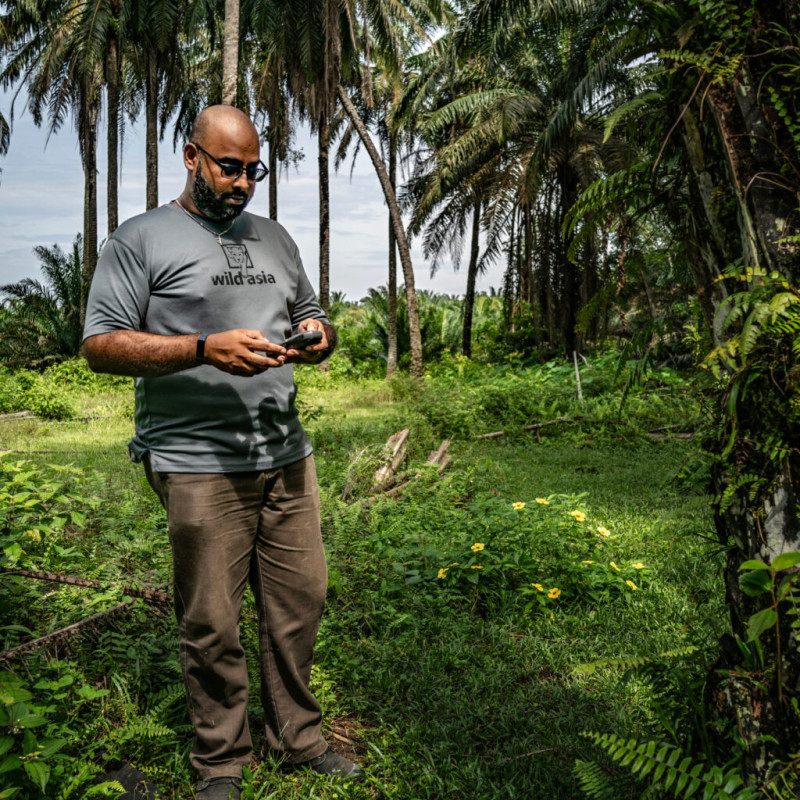

Gerard Benedict of Wild Asia uses GPS to geo-locate the boundary of Neoh Ah Seng’s oil palm farm in Kampung Sungai Kroh, Perak, to verify that it meets the smallholder requirement of being 99 acres or less, a key component of meeting the EUDR criteria.
But the MSPO regulations, although mandatory, are not publicly accessible. Without paying a fee, the details of this crucially important sustainability regime remain opaque, which further erodes consumer trust in such certifications.
“Although the details of these regulations remain unclear,” Sulaiman told me, “we are preparing ourselves to go beyond EUDR requirements rather than opposing them.”
But if I’d expected frantic preparations for the EUDR certifications, I would have been wrong.
“I’ve heard people talk a little about [the EUDR], but I’m not worried,” Hizlyn, the smallholder, told me. Most small producers in Malaysia seemed almost dismissive about the EUDR, if they’ve heard of it at all, regarding it as another layer of certification but confident that their MSPO compliance would meet the EUDR standards.
Yet, Hizlyn says, the layers of certifications and regulations, and their inconsistent transparency, puts unexpected burdens on farmers that have limited means of meeting them.
“Regulations like the EUDR have been established,“perhaps without fully understanding the history and impact of such policies,” she said.
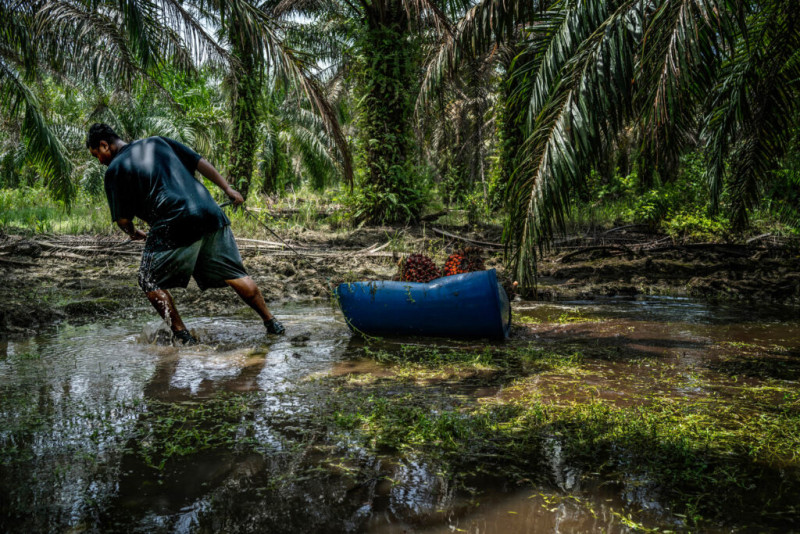
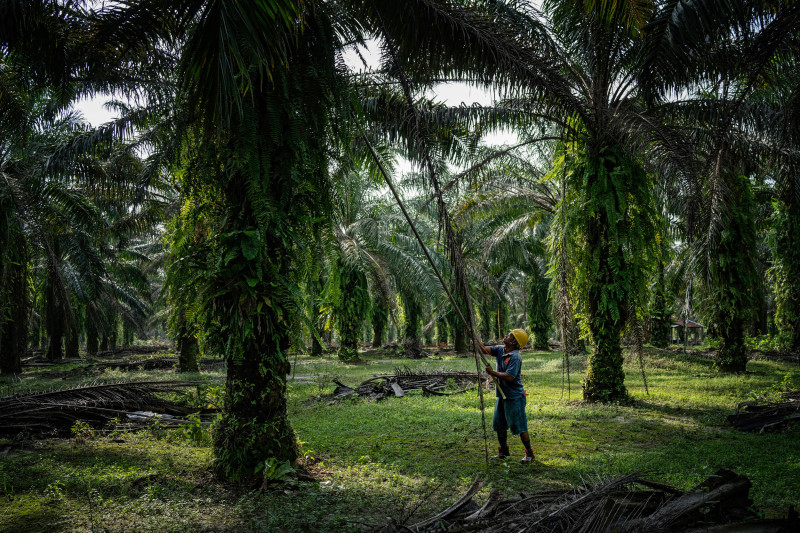
In some countries, impoverished, landless people carving into the edges of shrinking forests to eke out a living are a driver of deforestation. But Malaysia is a middle-income country, with a per-capita gross national income of $11,780 in 2022, according to Nikkei Asia.
Here, it has been well-funded logging companies, obtaining concessions from state governments to clear the forest, who have opened up massive swaths of land so that large agricultural corporations can create sprawling plantations for oil palm and, to a lesser extent, rubber and durian fruit.
Between 2001 and 2023, Malaysia lost roughly a fifth of its primary forests. Nearly 80 percent of that loss of forest cover was commodity-driven deforestation to convert land into plantations, the World Resources Institute reports.
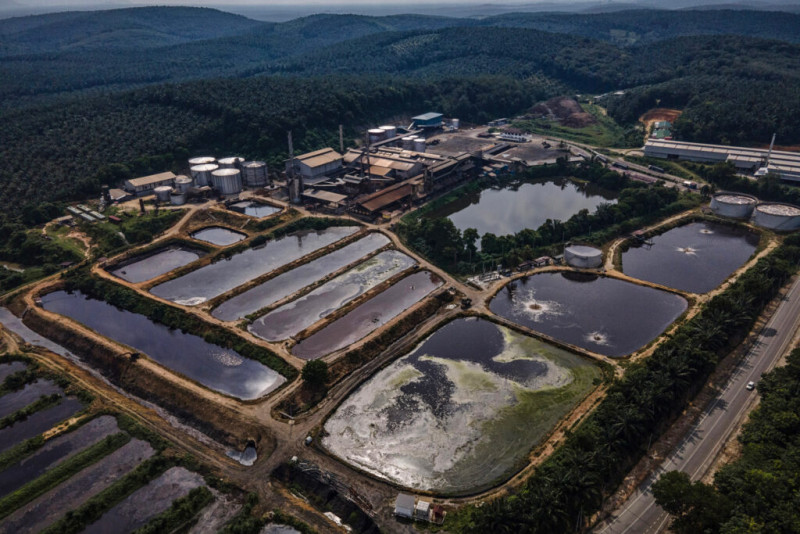
It’s been decades since Hizlyn’s land was a rainforest. It was planted with rice and then rubber in the mid-20th century, after the British colonial era.
But the flat coastal plain on which her smallholder farm sits is now a vast, featureless expanse of oil palm plantations.
Wild Asia helps smallholder farmers using long-established agricultural land cultivate oil palm more sustainably, retaining the fertility of the thin tropical soils while lowering overhead costs.
Its WAGS (Wild Asia Group Scheme) program provides support for small producers that helps them comply with existing regulations and prepare for the new requirements that will come with the EUDR, including mapping their properties using GPS technology to provide an official record of any changes in forest cover.
Sustainability Requirements Lead to Unexpected Innovations
Within the 3 acres of Neoh Ah Seng’s carefully manicured rows of oil palm trees in Kampung Sungai Kroh, Perak, incongruous tufts of flowering native plants are emerging.
“Those are habitat islands,” he tells me. “The flowers attract insect predators that eat pests.”
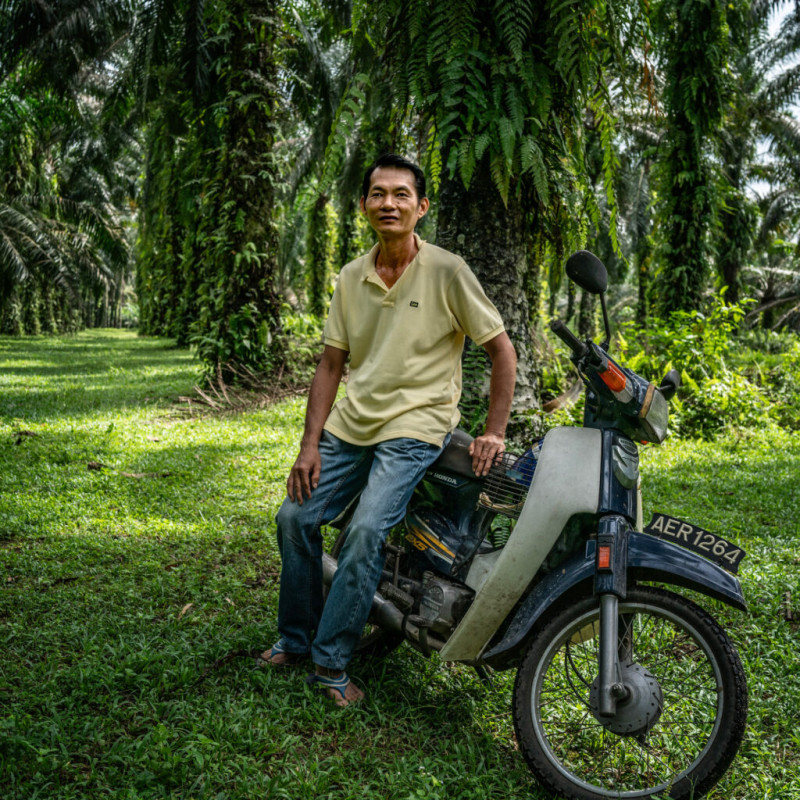
Attracting those helpful insects with native flowers also reduces pesticide and chemical fertilizer use, Wild Asia’s Gerard Benedict explained.
Neoh, a WAGS member since 2018, said his oil palm yields have remained stable since he introduced beneficial plants and cut chemical use.
Mat “Haji” Jailani said he used to spread chemical herbicide on his 49-acre oil palm farm in Kampung Sungai Lesong, Perak, leaving the ground bare, increasing erosion and leeching chemicals further into the environment. “Now I just let the grass grow,” he said.“It is cooler now with the grass, and with the beneficial plants, I save money because I rarely need to use chemical herbicide.”
Jailani, who likes to keep his hands in many pots, keeps bees to produce honey. “I worried that the spraying would affect my stingless bees.”
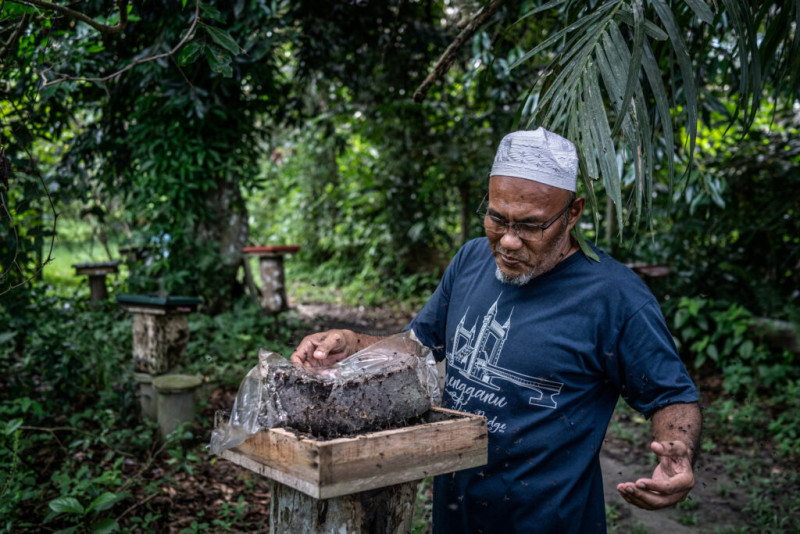
He also produces his own organic fertilizer, known locally as “bio juice.” Leading us over to an open shed and pulling back the lid of a large plastic garbage can, he showed a slimy liquid with a white film and vegetable scraps floating on top of it. Smaller three-liter plastic bottles were filled with brown, fully-aged bio juice, ready to use on the farm.
He’s heard of EUDR. It came up at the local farmers’ association.
“But I am not sure of the details,” he said.“If it can give benefit, then I’m fine with it.”
Even if he doesn’t have to do anything different for the new certification, he anticipates more changes coming to his farm.
“In the ’60s and ’70s, the weather started to change,” said Jailani, 60. “It was cooler then, with more rain. Weather patterns were more predictable.”
At what looked like one of many hollowed-out tree stumps, Jailani lifted a lid and peeled away a sheet of plastic, and a silent cloud of stingless bees emerged and coated his arms.

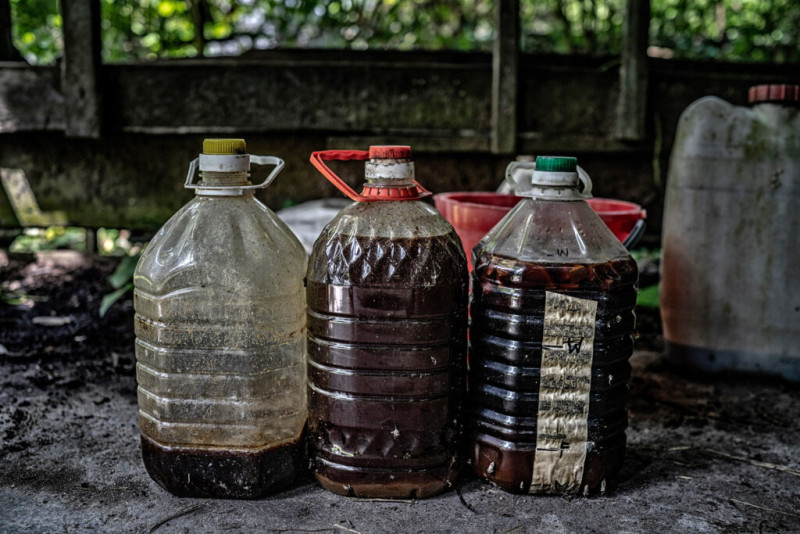
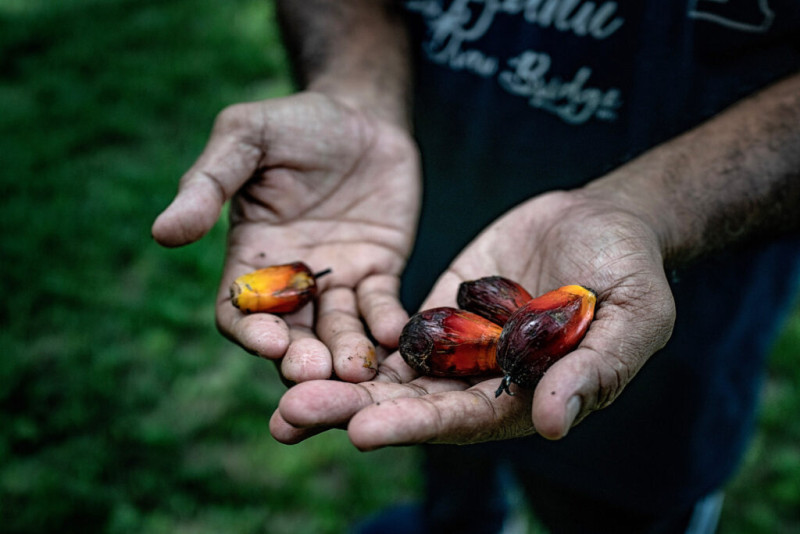
He poked a thin straw into the hive, which wasn’t the familiar, geometric honey cone. It looked more like a scene from a fever dream—sinuous hollow pillars, emerging into the hive superstructure from pot-bellied chambers filled with honey.
I took a sip from the straw. The honey had a flavor and consistency like grape juice.
“There is more water in stingless bee honey,” he explained.
“I Feel a Little Anxiety”
Carey Island, just an hour’s drive from Malaysia’s biggest city, Kuala Lumpur, is clothed almost entirely with oil palm trees. The multinational conglomerate Sime Darby owns 89 percent of the land, but a community of Indigenous Mah Meri people holds onto a small portion of the island.
“When I was young, there was no oil palm,” said Reta a/p Lajah, the chairwoman of the village. “Most of the land on Carey Island was scrubland, with mangroves growing closer to the strait.”
The Mah Meri community raised mostly coconuts, coffee, rambutan, mangosteen and a little cacao.
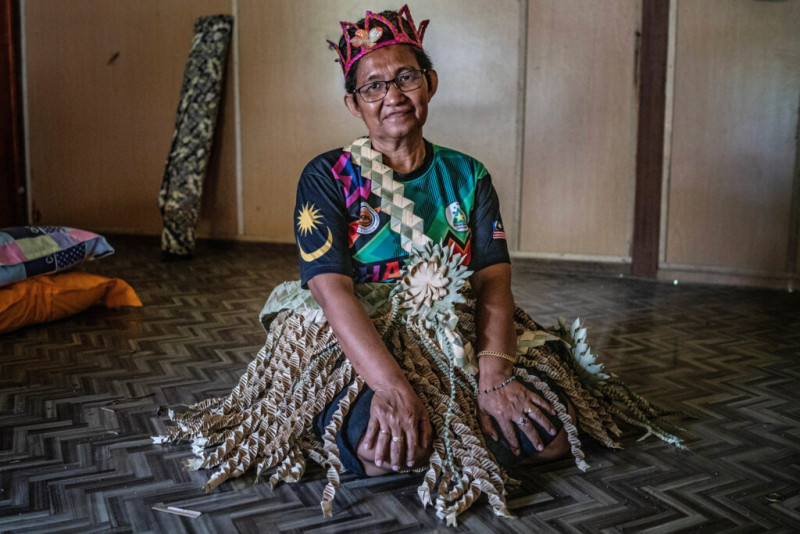
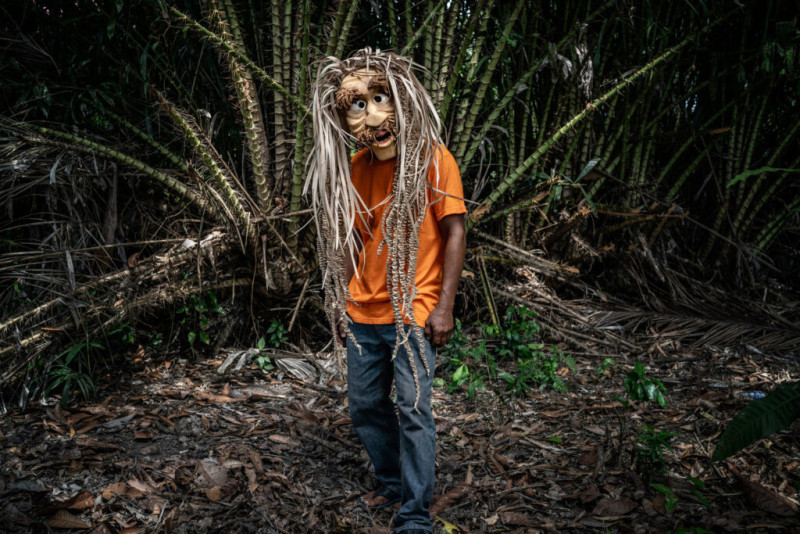
In 1986, JAKOA, the Department of Indigenous Peoples Development, provided one hectare’s worth of oil palm trees for every adult in the community.
“Oil palm is a hardy tree that can live in any kind of soil,” said Daiman bin Peron, leader of Kampung Sungai Judah. “It requires less fertilizer than coffee or coconut trees, and we can earn three times as much per acre than from coffee or coconuts.”
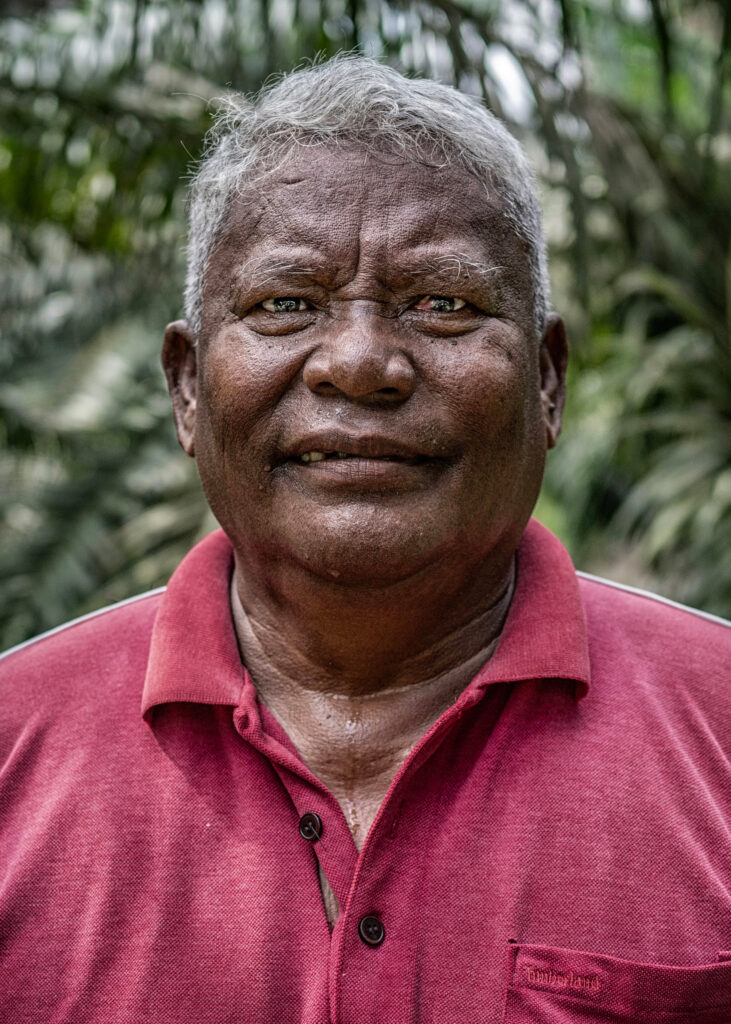
“For coffee, you need to wait three years before the first harvest. Oil palm can be harvested in a year and a half.”
Oil palm needs less maintenance, too.
“We only have to work hard twice a month,” Daiman said.
All of that has made a difference in the village. “We live in better houses with electricity and plumbing,” Lajah said. “When I was young, only two girls finished high school. We learned by doing.”
Now all children go to school and one of Peron’s grandchildren is enrolled in university.
Wild Asia helped get MSPO certification for Lajah’s and Peron’s land in 2017. But like growers in Perak, Lajah knows almost nothing about the EUDR.
“I feel a little anxiety,” Peron said. “Will I be allowed to cut trees to build a house? I will follow the rules, but I am not sure exactly what they are.”
Back at Hizlyn’s small plantation, workers from palm oil dealer Teik Joo Chan were busily sweeping up oil palm fruits that had fallen to the ground, making sure each one made it to the company.
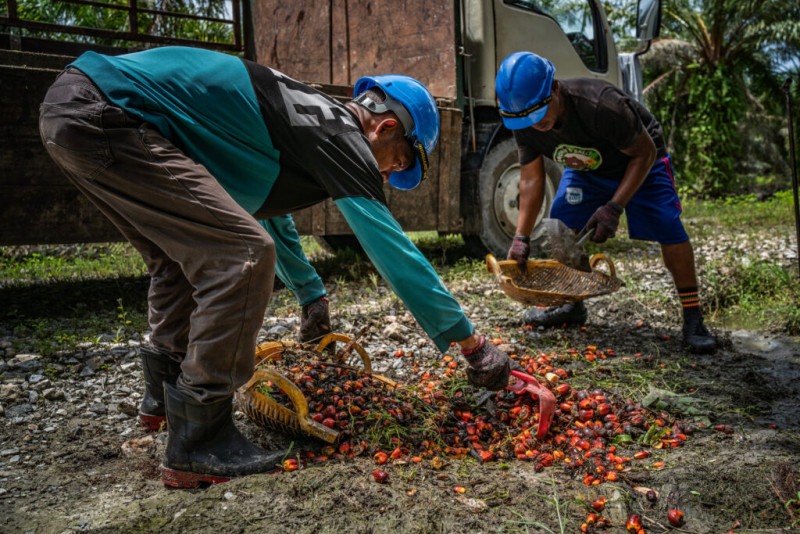
“I always associated oil palm with deforestation, the destruction of wildlife habitat and the demolition of Indigenous peoples’ villages, etc.,” said Nadiah Jalaluddin of Wild Asia in Perak. “But later I saw how oil palm is also a crucial source of income for smallholders, how it has lifted many from poverty and continues to improve their livelihoods.”
Inside the dark, air-conditioned Teik Joo Chan office, a female employee wrote out a simple receipt for 2,220 kilos of palm oil fruit, with the stamp “Certified RSPO & MSPO.”
Within the next couple of years, if Hizlyn wants to sell her palm oil in the EU, one more stamp will have to be added to that receipt—“EUDR.”
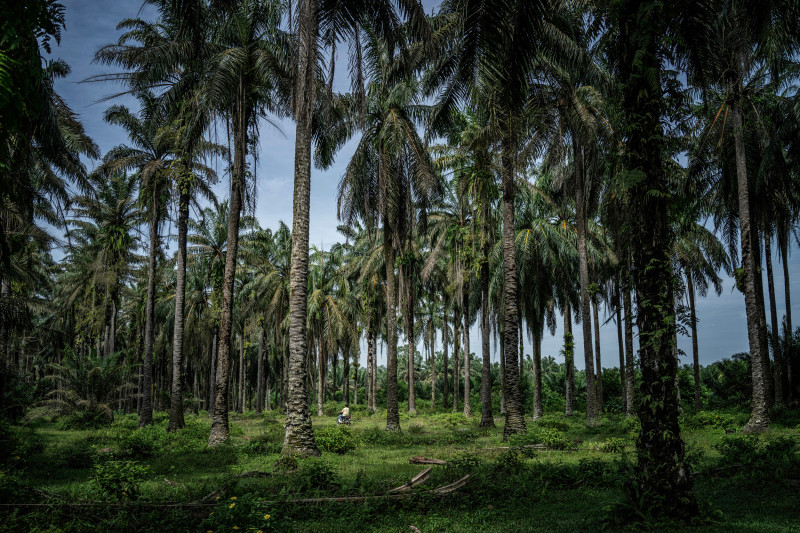
About This Story
Perhaps you noticed: This story, like all the news we publish, is free to read. That’s because Inside Climate News is a 501c3 nonprofit organization. We do not charge a subscription fee, lock our news behind a paywall, or clutter our website with ads. We make our news on climate and the environment freely available to you and anyone who wants it.
That’s not all. We also share our news for free with scores of other media organizations around the country. Many of them can’t afford to do environmental journalism of their own. We’ve built bureaus from coast to coast to report local stories, collaborate with local newsrooms and co-publish articles so that this vital work is shared as widely as possible.
Two of us launched ICN in 2007. Six years later we earned a Pulitzer Prize for National Reporting, and now we run the oldest and largest dedicated climate newsroom in the nation. We tell the story in all its complexity. We hold polluters accountable. We expose environmental injustice. We debunk misinformation. We scrutinize solutions and inspire action.
Donations from readers like you fund every aspect of what we do. If you don’t already, will you support our ongoing work, our reporting on the biggest crisis facing our planet, and help us reach even more readers in more places?
Please take a moment to make a tax-deductible donation. Every one of them makes a difference.
Thank you,
David Sassoon
Founder and Publisher
Vernon Loeb
Executive Editor
Share this article
- Republish
Disclaimer: The copyright of this article belongs to the original author. Reposting this article is solely for the purpose of information dissemination and does not constitute any investment advice. If there is any infringement, please contact us immediately. We will make corrections or deletions as necessary. Thank you.







